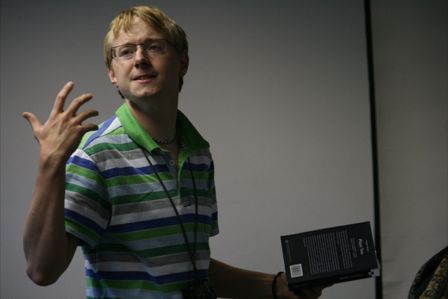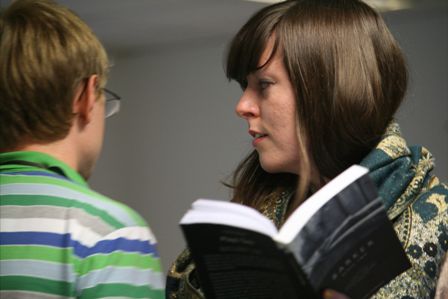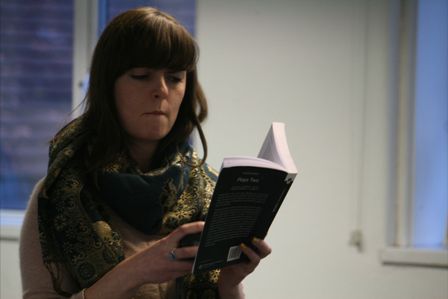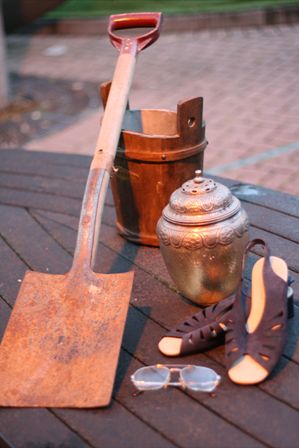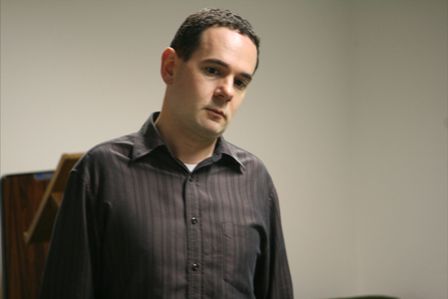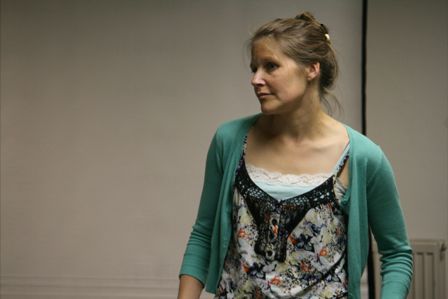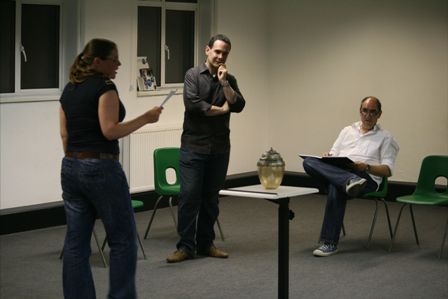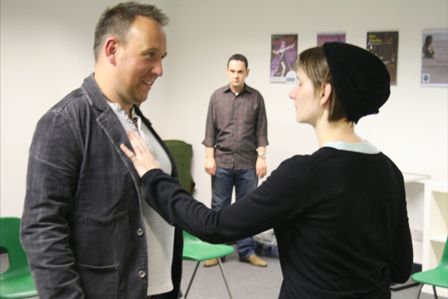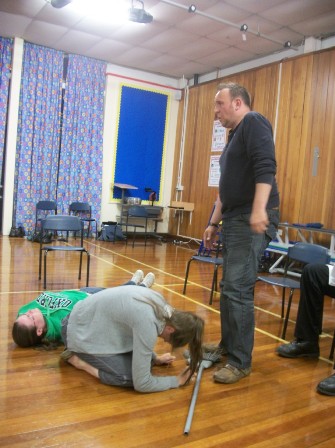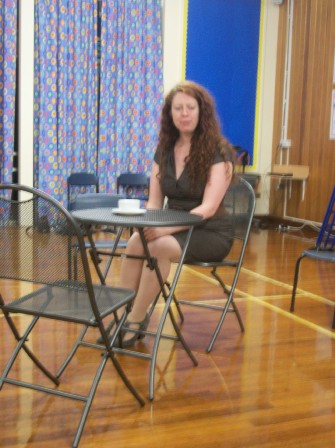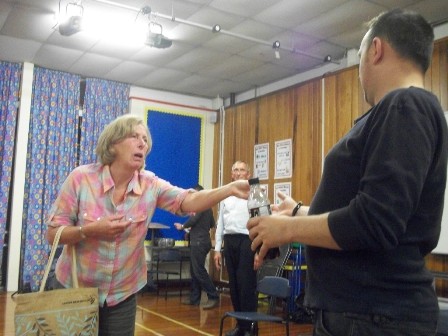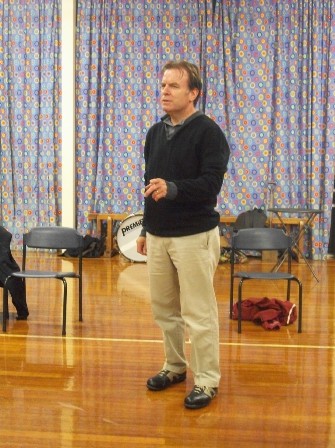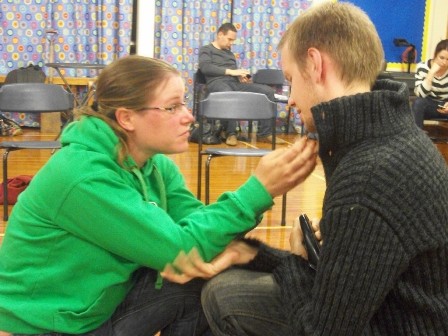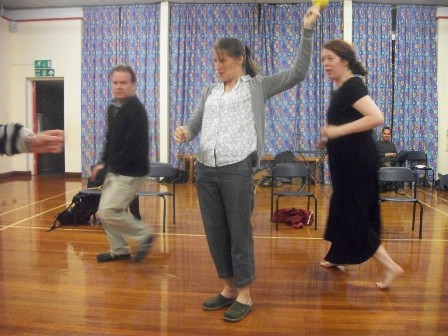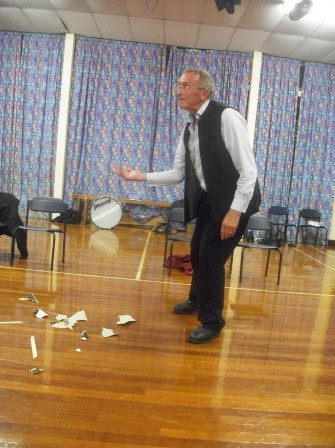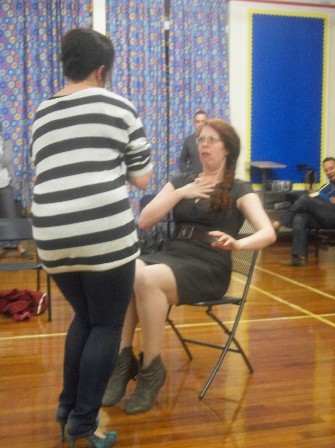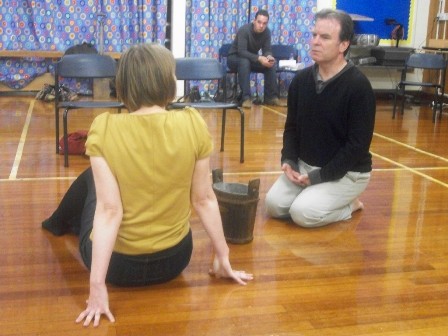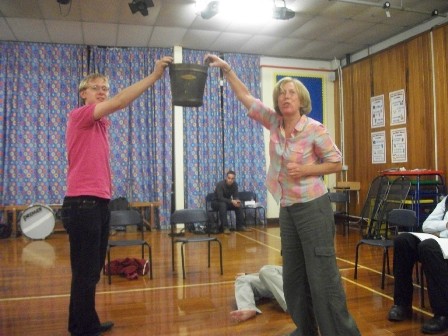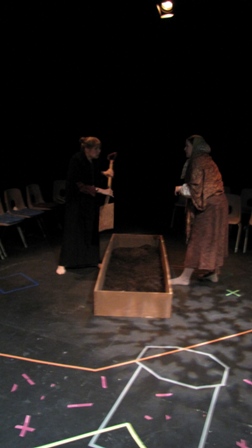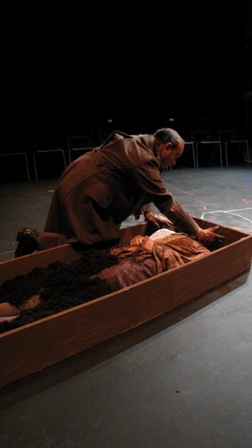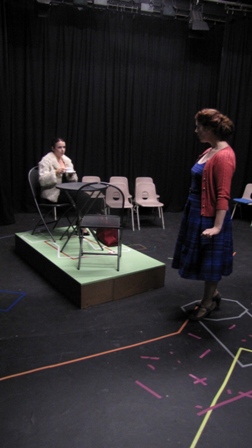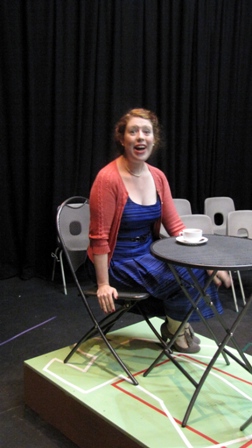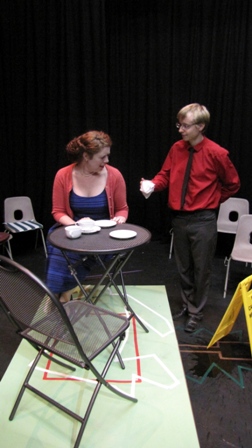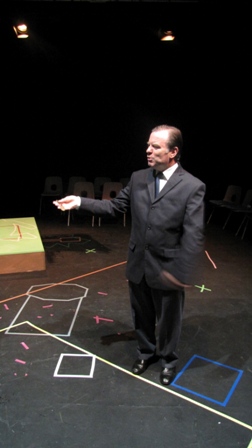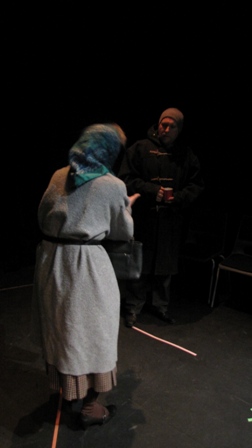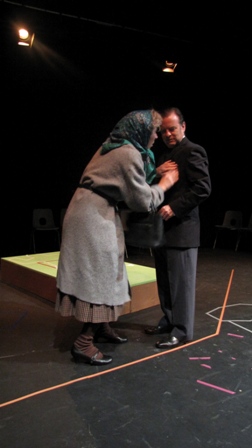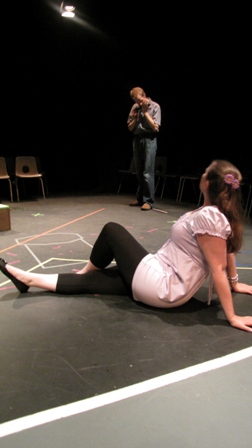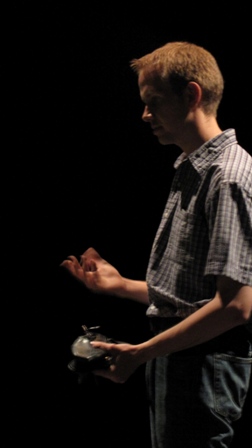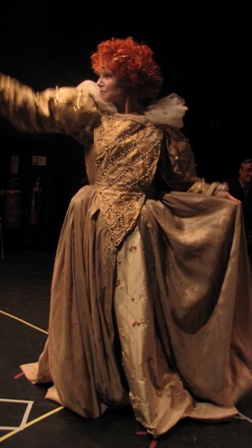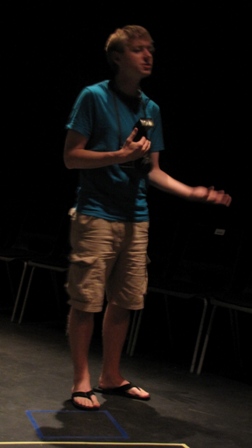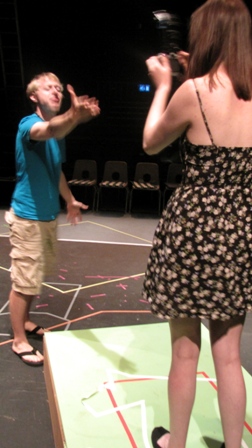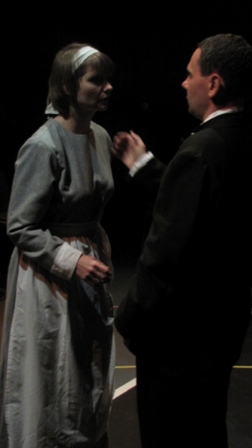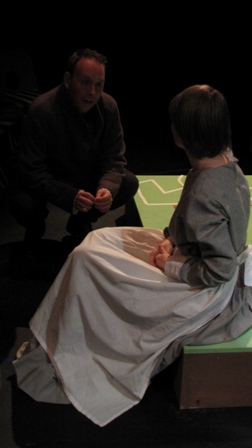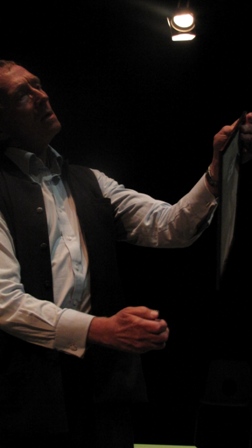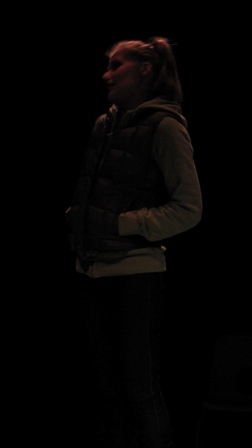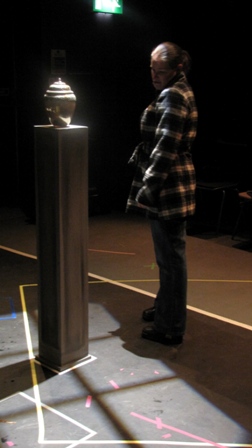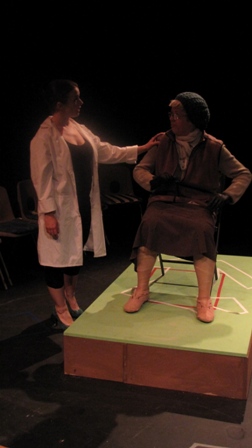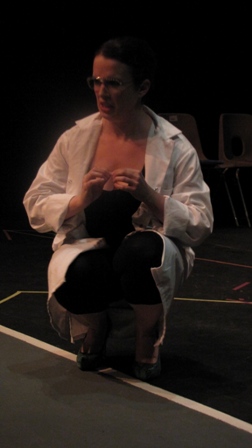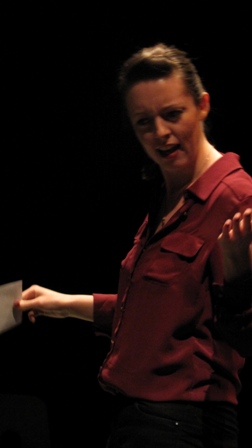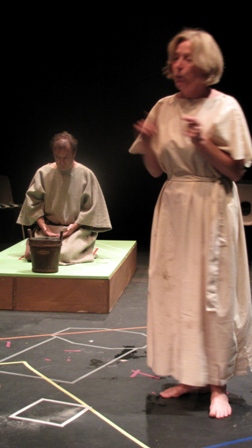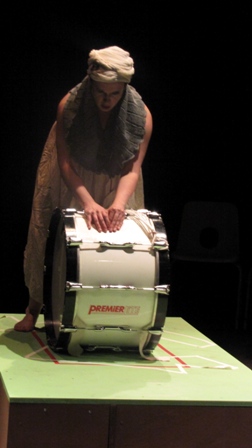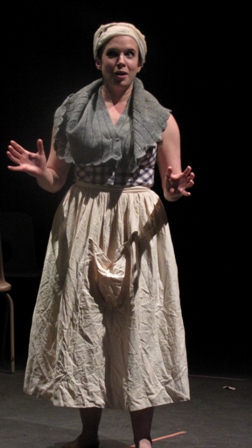AuthorHoward Barker
Howard Barker
Howard Barker's first play was performed at the Royal Court Theatre Upstairs in 1970. Subsequently, his works were played by the Royal Court, Royal Shakespeare Company, The Open Space Theatre, Sheffield Crucible and the Almeida. He is currently Artistic Director of The Wrestling School, a company established to disseminate his works and develop his theory of production. His work is played extensively in Europe, in translation, in The United States, and in Australia . He writes regularly for radio, both in England and Europe . He is the author of plays for marionettes and has written three librettos for opera. Howard Barker is the author of two works of theory, and five volumes of poetry. He is also a painter. His work is held in national collections in England (V&A, London) and Europe.
Play13 Objects
The 13 playlets that form the complete 13 Objects take a variety of forms; monologues, duologues and scenes with 3 or 4 characters interacting. They also cover a variety of themes and issues; insecurity, grief, beauty, love, loss, faith, sex, poetry, art, perception - pretty much all of life's rich tapestry is here. Above and beyond the thematic link that Barker attempts to make, [that we invest objects with a worth that is unique to the individual and this reflects or defines our connections with the wider world through the prism of the objects], is the theatricality and the rich, poetic language Barker employs. Shakespeare it ain't, but it is a language full of ideas, rhythms and cadences that are just as demanding and just as rewarding.
The Bench Production
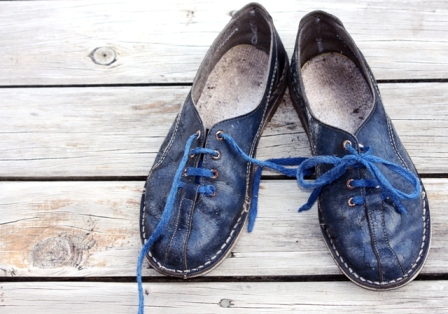
This play was staged at The Spring Arts and Heritage Centre (formerly Havant Arts Centre), East Street Havant - Bench Theatre's home since 1977.
Cast
| A Lonely Spade | Officer | Neil Kendall |
| First Prisoner | Julie Wood | |
| Second Prisoner | Claire Lyne | |
| Cruel Cup Kind Saucer | Woman | Alice Corrigan |
| Waiter | James Hall | |
| Tin | Soldier | Simon Walton |
| Old woman | Sharman Callam | |
| Man | Paul Millington | |
| Second Man | Neil Kendall | |
| Old Man | Terry Smyth | |
| Navy Blue | Man | Thomas Hall |
| Woman | Claire Lyne | |
| The Talk of a Toy | Queen | Julie Wood |
| Attendants | Alice Corrigan | |
| Robin Hall | ||
| Kathryn Godwin | ||
| Simon Walton | ||
| Cracked Lens | Youth | James Hall |
| Girl | Helen Young | |
| Not to Escape Now | Man | Paul Millington |
| Woman | Robin Hall | |
| Youth | Neil Kendall | |
| The Investor's Chronicle | Man | Terry Smyth |
| Poet Ash | First | Claire Lyne |
| Second | Julie Wood | |
| Third | Paul Millington | |
| Blind Prejudice | Optician | Kathryn Godwin |
| Old Woman | Alice Corrigan | |
| South of That Place Near | Woman | Helen Young |
| The Hermit's War with God | Stilpo | Simon Walton |
| First Poor | Sharman Callam | |
| Second Poor | James Hall | |
| Pale Girl | Robin Hall | |
| Listen. I'll Beat You | Drummer | Thomas Hall |
| Woman | Kathryn Godwin |
Crew
| Director | Damon Wakelin |
| Producer | Jaspar Utley |
| Asst Producer | Ingrid Corrigan |
| Stage Manager | Megan Green |
| Assistant Stage Managers | Maurice Lillie and Sue Dawes |
| Lighting Design | Damon Wakelin |
| Lighting Operation | Derek Callam |
| Sound Operation | Jeff Bone |
| Set Model | Vicky Wakelin |
| Set Design | Damon Wakelin |
| Set Construction | Thomas Hall and Company |
| Costumes | Sue Dawes |
| Programme Editor | Derek Callam |
| Poster | Pete Woodward and Printcraft |
| Front of House | Ingrid Corrigan |
Director's Notes
Director's Notes or Genesis of a Production
Over the years we have tried to provide insights into different aspects of what goes into making a Bench production; lighting, stage management and the role of the producer as well as the obligatory "Director's Notes" on each individual show. This is a combination of both. 13 Objects has taken me on an unusual journey and I thought I might share some of the thought processes that have brought the production to the form that you are witnessing this evening.
When I first pitched the play, unsuccessfully, it was as a large cast play, pretty much 'if you come to audition, you're in it'. I also envisaged a stage space in which the 13 Objects of the title were permanent fixtures, each object only being utilised when the appropriate scene was being performed. Things have changed ever so slightly.
When I re-presented the play to the company for selection, this time successfully, there were a number of changes. I had acknowledged that the play might not be everyone's cup of tea and so the pessimist in me kicked in. I stripped the casting down to what I considered the bare, yet practical, minimum. The end result was 5 men and 5 women. In terms of 'design', inspired by reading a play by Duncan McLean called Julie Allardyce, the 13 Objects in the space were to be a de-constructed modernist painting, in the style of Kazimir Malevich's Suprematist paintings. I liked the idea of the two distinct strands of modernity combining visually and aurally.
So, the play had been selected and it was time to prepare for auditions. I am notorious for trying different ways of auditioning, above and beyond the "read and say it, we'll let you know" variety. This time around I was determined that the auditions should be intrinsically linked to the work of the rehearsals to come. One of the distinctive aspects of the script is that it no contains no, or at least very little, punctuation and so it was this that formed the core of my planning. Some might see it as a huge obstacle, but the lack of punctuation is, I think, a wonderful opportunity for the actor and director to meaningfully negotiate narrative, character, motivation, intention and context. All through being forced to apply your own full stops.
Auditionees (13 of them, as it happened) were asked to prepare, but not learn, a short speech of their own choosing that we would 'work' during the audition. We did three different exercises, each one geared towards analysing and animating a text through different means. We started with punctuation and 'walking the text'. Essentially, one ascribes differing lengths of time to each piece of punctuation on the page. Full stops longer than a comma, different again for a semi-colon, longer again for a given (Pause) and so on. Allied with this is the fact that the actor must be moving all the time they are speaking but must stop and change direction when they hit punctuation. The exercise creates a distinct sense of pace and rhythm in a speech but also throws into sharp relief changes of thought, feeling, idea, action, intention and motivation.
Then came 'public/private'. Monologues, and there are a number of them in this evening's entertainment, are generally linked by one thing - the character's need to be heard or at least to speak aloud their thoughts. But is this privately or in public? The actors were asked to perform their speeches privately, (huddled in small groups making sure no-one else in the room could hear), and then publicly, (demanding to be heard despite the active indifference of the others present). The process encourages the actor to assess which parts of the speech are private, or intimate, and those which absolutely must be heard.
Finally, a Max Stafford-Clark speciality; 'actioning'. This is the application of transitive verbs to a text. Done the Stafford Clark way it is an exhaustive cornerstone of a rehearsal process. In the time frames available to us, what it provides is really useful shorthand to generate detail. For instance, a speech may begin with "angrily" as its transitive verb, or action, the actor playing angry and then driving on through the speech. Left unchecked this becomes a formless block of 'being angry'. Actioning allows for detail to be applied and to create texture and differentiation within a speech, or indeed dialogue too. During the speech the actor 'calms', 'rails', 'interrogates', 'demands', 'reflects' 'doubts', and so on, creating something much more interesting, and ultimately more truthful than simply 'angry'. Given that everyone in the play took part in the auditions and in these exercises, I have been able to refer back to them throughout the rehearsal process and they have formed a shared vocabulary and frame of reference for the company.
"When I begin work on a play, I start with a deep, formless hunch which is like a smell, a colour, a shadow. Thatís the basis of my job, my role - that's my preparation for rehearsals with any play I do. There's a formless hunch that is my relationship with the play. It's my conviction that this play must be done today, and without that conviction I can't do it."
Peter Brook, The Shifting Point
I absolutely identified with this when I read it, certainly the final statement and it was really at this point that everything changed. Again. I was agonising over the casting when my wife Vicky reminded me of a suggestion she had made months previously. "The play is called 13 Objects, so why not have a cast of 13?" 13 auditionees for a play called 13 Objects? Surely, there was some alchemic force at work here that was simply irresistible and, with Peter Brook and Vicky ringing in my ears, I duly cast everyone. I also re-visited everything else I had 'decided' about the play. Peter Brook intervened again.
The Shifting Point includes a section about theatre architecture, specifically about how modern theatre building design is geared towards profit margins rather than the practical, aesthetic needs of the performers who must use the space as their medium to communicate with an audience. (The bottom line over sight lines?) This set me thinking about space and how it's a shame, albeit a small one, that we as a company have no access to different spaces. Then it struck me that, actually, we do. When The Spring is used for live music there is a seated/standing set-up and I remember running countless Youth Theatre classes in the theatre with the front rows pushed back in readiness for a gig. Using the same set-up we could easily create a 'thrust' with the audience on 3 sides, a little like Chichester Festival space. And then I thought why not go the whole hog and go 'in-the-round' with the audience on all 4 sides? I checked the feasibility with Simon Gray, Technician at The Spring, and the decision was made. In-the-round it was.
The first casualty of this choice was the design. Large sets and certainly suspended sets were useless in the new space; they would block the view of dozens of people in the audience. And that would never do. Minimalism seemed to be the new order of the day and all that remains are the grave/dais and the plinth for the urn. And a couple of chairs. But it needed a design element of some sort, if only to elevate the sense of a theatrical space, but it needed to be unobtrusive which seemed to be a contradiction in terms.
Dogville!
Sorry, I should explain.
Made in 1993, Dogville was written and directed by Lars von Trier and starred Nicole Kidman, Lauren Bacall, John Hurt and Paul Bettany which von Trier describes as a film about how "evil can arise anywhere, as long as the situation is right". For my own theatrical magpie purposes it is the design of the film set that was important. The small town in which the film is set is depicted entirely by white tape on a black floor, even to the point of gooseberry bushes being an outline with the legend "Gooseberry Bushes" written next to them. The bare staging serves to focus the audience's attention on the acting and storytelling, and also reminds them of the film's artificiality. And it was this that attracted me. It was very Brechtian, (I like Brecht), but it also felt strangely Barker-esque, too. This gave rise to the tapes you see on the stage floor; a different colour for each scene and each scene being indicated in its' own unique way. As I write these notes there are some scenes for which I have yet to make a final decision re: taping; I am waiting for the moment or the discovery in rehearsal that provides the solution.
Even the poster design changed time and again. Dan Finch and I tried over and over to find a way to incorporate the 13 Objects of the title into a single, interesting and attractive design. Time and again we missed it. So I changed tack again; perhaps something very traditional to counterpoint the modernity of the play itself. I was having this conversation with Jaspar in my hallway after an afternoon coffee, sorry, Production Meeting, when we both saw it at the exact same time. Hanging by my door is a poster, a gift that Jaspar had given me during our time co-directing Macbeth; a copy of a Portsmouth Theatre Royal playbill from 1867. Perfect.
"The actor, in learning to be true and simple, in learning to speak to the point despite being frightened, and with no certainty of being understood, creates his own character; he forges character in himself. Onstage.
And it is this character which he brings to the audience, and by which the audience is truly moved"
David Mamet, True and False
Working in-the-round on such a lyrical yet demanding text has been fascinating. The plays themselves are full of ideas, conflicts, contradictions, explosions; they are in turn gloriously elusive, ambiguous, illuminating, funny, (yes, really), moving, sly and warm. And the heightened sense of intimacy that the new acting space seems to generate is genuinely exciting - though the actors may use a different euphemism. What is undeniable is that there is nowhere to hide; every word, every move, every gesture, every thought and every emotional shift is exposed to maximum scrutiny, and from every angle. And it really exposes falsehood. We have striven to find the truth, or at least a truth, in everything you will see tonight. And in that I am hugely indebted to the enormous amount of work the cast have put in to their performances. The conversations they have been having with each other and with trusted friends and loved ones about the pieces and the subsequent drive, creativity and intellectual and artistic rigour they have brought to the rehearsal room has been, genuinely, humbling. Largely, I have tried to keep out of their way and not muck it up! Maybe this piece of advice from James Cagney best sums up what we're trying to do.
"Find your mark, look the other fellow in the eye,
and tell the truth."
I should also like to express my gratitude to everyone who has given their time and energies to the forming of this show, in particular to the show's Producer, Jaspar Utley. Despite surgery, an additional recall to hospital, pending surgery, cancelled holidays, blocked drains and the like he has been a constant source of support, good humour, common sense and coffee. I am honoured to call him 'friend'. I am even more grateful to my wife, Vicky. After the play was selected, we discovered Vicky was pregnant and that the due date was 20th July, alarmingly close to the rehearsal period for the show. In the event Arlo (8lbs 8ozs for those that like to know these things) was born on 24th July. Rehearsals started 31st July. Yoicks! To say Vicky has borne the trials and tribulations of a new born baby, a 3 year old and me sloping off to rehearsals rather well is an understatement. To suggest I am a lucky man is also an understatement. My life is a richer, better place for her presence in it.
One final word from David Mamet.
"Acting is not a genteel profession. Actors
used to be buried at crossroads with a stake
through the heart. Those people's performances
so troubled the onlookers that they feared their
ghosts. An awesome compliment.
Those players moved the audience not such that
they were admitted to a graduate school,
or received a complimentary review, but such
that the audience feared for their soul. Now
that seems to me something to aim for.
Enjoy the show and many thanks for supporting the Bench Theatre.
Damon Wakelin
Reviews
BlogspotEllie Dawes
Discovering Howard Barker; Bench Theatre, 13 Objects
I'm aware that I have not written on this blog for a while. Rest assured I am still going to the theatre as regularly as I can though not as regularly as I would like. Plays I have recently enjoyed but didn't have anything blogworthy to say about, have been Birthday at the Royal Court, an excellently performed Winter's Tale from the Rough Mechanicals and a precise and beautifully designed Calendar Girls at the Miller Centre.
But yesterday I came down to Havant to see Bench Theatre perform 13 Objects, directed by Damon Wakelin. And not having seen a Howard Barker play before I wanted to record what I thought of it.
This wordy, philosophical play is just my cup of tea. It consists of 13 short plays each centred around an object. The Bench performed the play with a cast of 13 which was apt. The language is incredible, it washes around you like word soup. It is like listening to a poem and then fragments of the text jump out at you, by turns horrifying and funny, profound and absurd. By showing you snapshots of widely varying characters the play captured the many contradictions, the joy and futility of human existence.
Above all though, this was an acting triumph. We watched one brilliant, honed performance after another trotted out like a feast. I can't possibly give all the actors credit here, the quality of all of them was startling. I watched actors I have admired since I was a teenager give performances I didn't know they had in them.
I won't go through all the plays but just give some examples to demonstrate the contrast. The first play is about death, a nightmarish 'officer' ushers in two crying women and urges them to dig their own graves. He plays with them, perhaps he will kill one of them, or both. Neil Kendal played the murderous officer with relish, at times almost Dickensian. Not knowing what to expect and quite horrified by this grim start the audience was carried along through his monologue by his magnetic stage presence and casual brutality. Julie Wood and Claire Lyne cried through this whole first play, the crying became like background noise setting the macabre tone for Kendal's monologue.
Then the second play started in a bright coffee house and Alice Corrigan gave a incredible performance as a prim slightly unhinged lady who had lost her lover. She delivered a monologue about how many of the cups in the cafe had been touched by his lips, throwing one on the floor to break it as she dryly observed 'one less'. It was funny and touching and, like so many of the performances in the play, completely spot on.
I wish I could write about everyone. Julie Wood's petulant and dimly disturbing Queen Elizabeth, Sharman Callam's old woman, Robin Hall's understated adulteress, Kathryn Godwin's manic optician, (whose lines about our gluttonous desire to see everything, shoving sights into our eye sockets pretty much summed up how I felt watching this play.)
I particularly found Terry Smyth's billionaire who buys a painting for 4.5million pounds and destroys it electrically entertaining. Like many of the plays it dimly reminded me of something else, in this case a Roald Dahl short story. As I watched the whole play images of other things flashed into my head: Blackadder, Cloud Atlas, Brecht, Amelie, 50 Shades of Grey. I think that indicates how wide the scope of the play is. To say this was an ambitious play to take on is an understatement.
One thing I found surprising about the play was how much the emotions and thoughts of the characters were spelt out in the script. Lines like 'I'm crying,' 'I am not unmoved' seemed superfluous with such precise acting performances. I particularly felt this in 'Cracked Lens' where the idealist photographer, unable to bring himself to photograph anything finds the camera turned on himself and this time agrees to a photo. He didn't need the lines about being trapped into exposing his idealism as narcissism, we already spotted that as soon as the girl took the camera from him. Strange that Barker felt the need to spell everything out rather than trust the actors to show it when he gave the actors so much freedom of interpretation in other ways, minimal punctuation leaving director and cast to make their own choices about rhythm, emphasis and pauses.
I can't finish this rather long and rambling post without mentioning the inspired staging. This is the first time I have ever seen a company rearrange the seating of The Spring's studio theatre into the round and it was inspired, making the plays incredibly intimate. The way the actors had to keep moving around to perform to all four sides also gave a natural energy to long monologues which added to the feeling of a play crammed full of life.
The positions and paths of the 13 objects were marked out on the bare black floor with different coloured tape. The genius of this idea was that while you were watching one play, you were also remembering the previous objects, and anticipating those to come. The stage was transformed into a palimpsest, not only tying the plays together but elegantly demonstrating the idea of these objects leaving indelible traces
Bench Theatre, you clever, clever people.
Production Photographs
